Just a short train ride from Edinburgh is one of Scotland’s most incredible and easily accessible nature reserves: the Isle of May.
Keep reading to learn everything you need to know about taking an Isle of May boat trip and how to see incredible puffins!
Table of contents for Isle of May Boat Trip
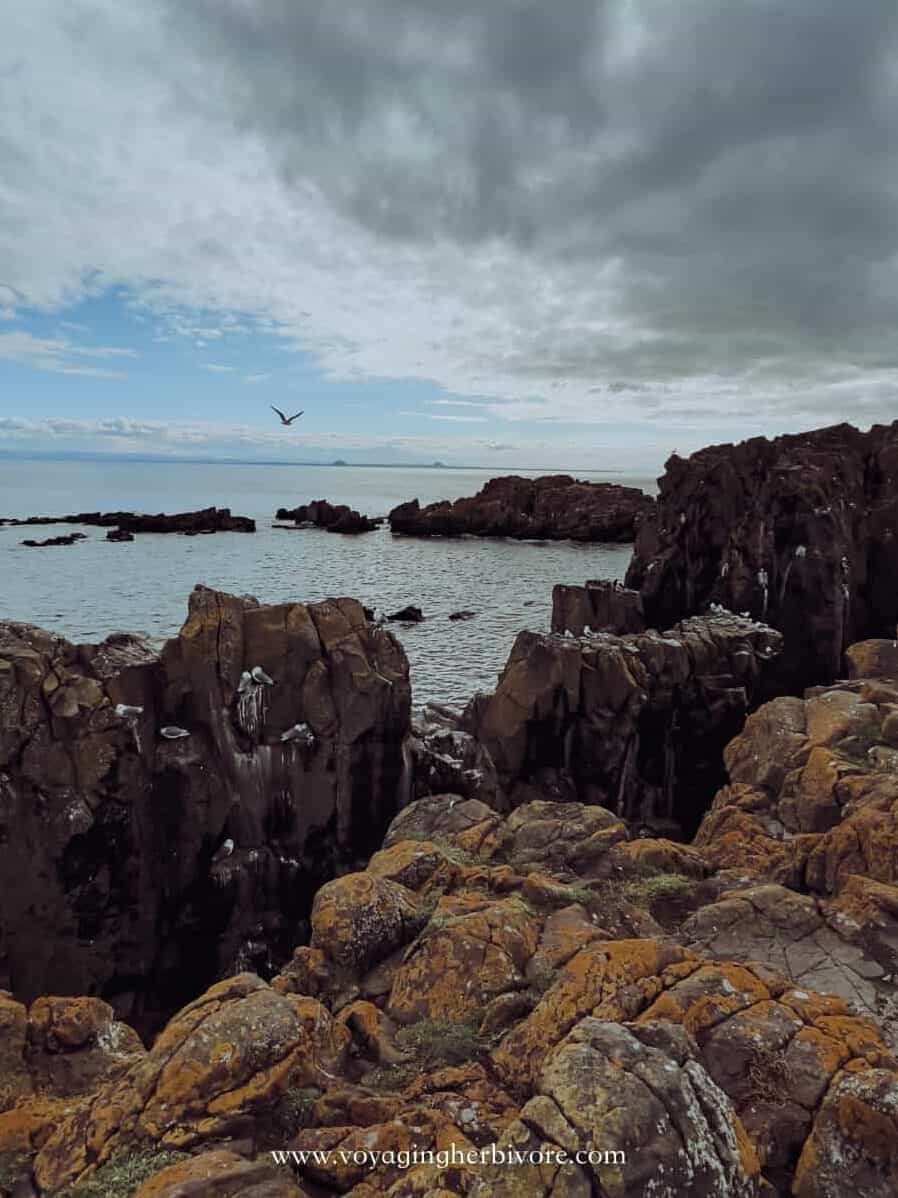
@voyagingherbivore Daytrips from #Edinburgh are the BEST! There really are so many things to see grom #ScottishCastles to #puffins on thr #IsleofMay ♬ original sound – Alysa
Where Is the Isle of May?
The Isle of May is a bird sanctuary and nature reserve located in the North Sea, five miles off the coast of Fife. It can be reached via boat from North Berwick, a town about 30 minutes outside of central Edinburgh via train (more on this below!). Alternatively, the Isle of May can be reached via boat from Anstruther Harbour.
Read More: Edinburgh to North Berwick: A Day Trip with Puffins & Castles
Isle of May History
The name the “Isle of May” has two potential origins:
- Old Norse meaning the island of seagulls
- From the Gaelic word magh meaning plain
Many of the surrounding islands have Gaelic names, but historians believe that either origin could be possible.
Although today the island is known for its incredible bird population, the Isle of May was a place of religious interest and was home to a monastery in the 9th century. Later, in the 12th century, King David I founded another monastery that lasted through the 15th century.
In 1934, the British Trust for Ornithology launched Scotland’s first (and the UK’s second) bird observatory on the Isle of May.
Throughout its history, the Isle of May has also been home to a lighthouse (and later on two) that guided ships along the dangerous coastline. Today, the old coal lighthouse is inactive however the newer lighthouse is solar powered with a backup generator.

Visiting the Isle of May
Best Time of Year to Visit
This Scottish island is only open for tourists between April and September. In fact, the researchers themselves don’t live on the island year-round, only arriving shortly before tourists and leaving just after them.
However, the most popular months to visit are in May, June, July, and August when puffins and other birds are nesting. You’re more likely to see baby birds, seals, and rabbits, and to grab a gorgeous shot of a puffin holding fish in its beak (more on this in the puffin section).
Don’t wait to check the weather before booking your ticket. The Isle of May boat trips fill up months in advance, particularly those from North Berwick.
How to Get to the Isle of May
The Isle of May is only accessible by boat and visitors are only allowed on at certain times. You can not take your own boat. You must go with a tour company (see the details below).
Isle of May Boat Trip Companies
Depending on what side of the Isle of May you’re visiting from will determine which Isle of May boat trip you want to take.
If you’re currently north of the Isle of May. . .
Your closest departure point will likely be Anstruther. From there, you can take one of two boat options:
- Isle of May Boat Trips: £ 23.00 – £ 45.00
- Anstruther Pleasure Cruises: Isle of May Ferry: £ 17.00 – £ 34.00
If you’re south of the Isle of May (this includes Edinburgh). . .
Your closest departure point is North Berwick. Scroll down to the “Visiting North Berwick from Edinburgh” section to learn how to get there by train in just 30 minutes.
- Scottish Seabird Centre: £ 26+
How Long Should You Spend on the Isle of May
Most Isle of May boat tours last around 5-6 hours, with about four hours on the island. All boat tours arrive and depart at the same time and are only allowed to have a certain number of visitors each day in order to protect the wildlife. This means that tours book up months in advance so be sure to book yours ASAP to avoid disappointment.
The island is small and easily walkable, but if only a few hours aren’t enough for you, you can actually stay on the Isle of May for a week but you will be put to work. Duties include keeping a daily bird census, migration log, and recording wildlife sightings. If you have dreams of luxury accommodation and ocean views, you’re guaranteed the scenery, but you’ll need to bring your own bedding.
The cost to stay for a week is £160/person but that includes the boat trip both ways, which would normally cost around £50-60 per person anyway.
Here are a few quick details about staying on the Isle of May:
- You need to bring your own bedding but mattresses are provided
- You need to take enough food to last the week
- You’ll have to boil your water before consuming it or bring your own filtered water
- Keep a daily bird census
- Keep a migration log
- Record wildlife sightings
You can read the full details and submit an application here: https://isleofmaybirdobs.org/how-to-visit/.
Would you do this? Would you like to see us spend a week on the Isle of May and record a vlog? Let me know in the comments and be sure to follow us on Youtube to get us motivated.
Wildlife On the Isle of May
Scotland’s Isle of May is home to tens of thousands of birds including of 40,000 pairs of puffins. The island is a breeding ground for an incredible variety of sea birds, rabbits, and seals.
Puffins
Puffins in Scotland? Better yet, puffins just a short train ride from Edinburgh? That’s right! Over 80,000 puffins return to their burrows on the Isle of May every year for spring cleaning (clearing out any debris that’s entered their nests). Puffins make their burrows in the ground, and the island is literally littered with holes (the nests). You must be very careful to stick to the paths to avoid stepping in any. If a puffin’s nest collapses, they must spend the breeding season making a new nest and won’t have any babies. However, this isn’t always easy because some brave puffins make their nests right in the middle of the path!
The puffins are most active on the Isle of May during the height of summer (June – August). It’s during this time that they’re bringing fish from the ocean to the island to feed their babies. This is when you can get an iconic photo of a puffin holding fish. Before they lay their eggs, they just eat as they catch food.
We visited the second day that the island was open, in April. We were incredibly fortunate to see hundreds of puffins already on the island since it was a nice sunny day but as rain rolled in towards the end of the trip, they headed back out to see. Because their nests are holes in the ground, they don’t go in when it’s raining for fear of drowning.
Read the Complete Guide: Puffins in Scotland: Where, When & How to See Them
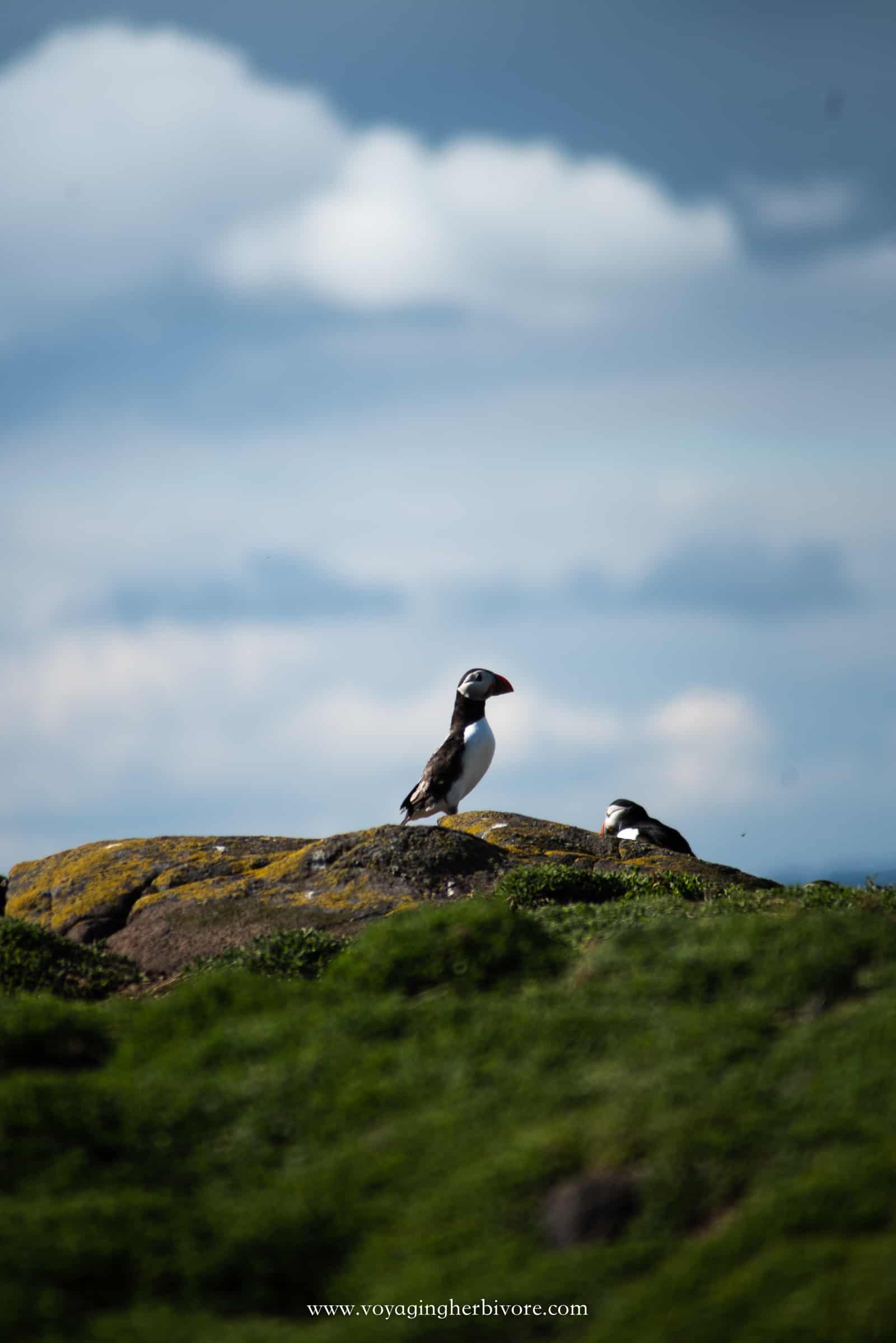

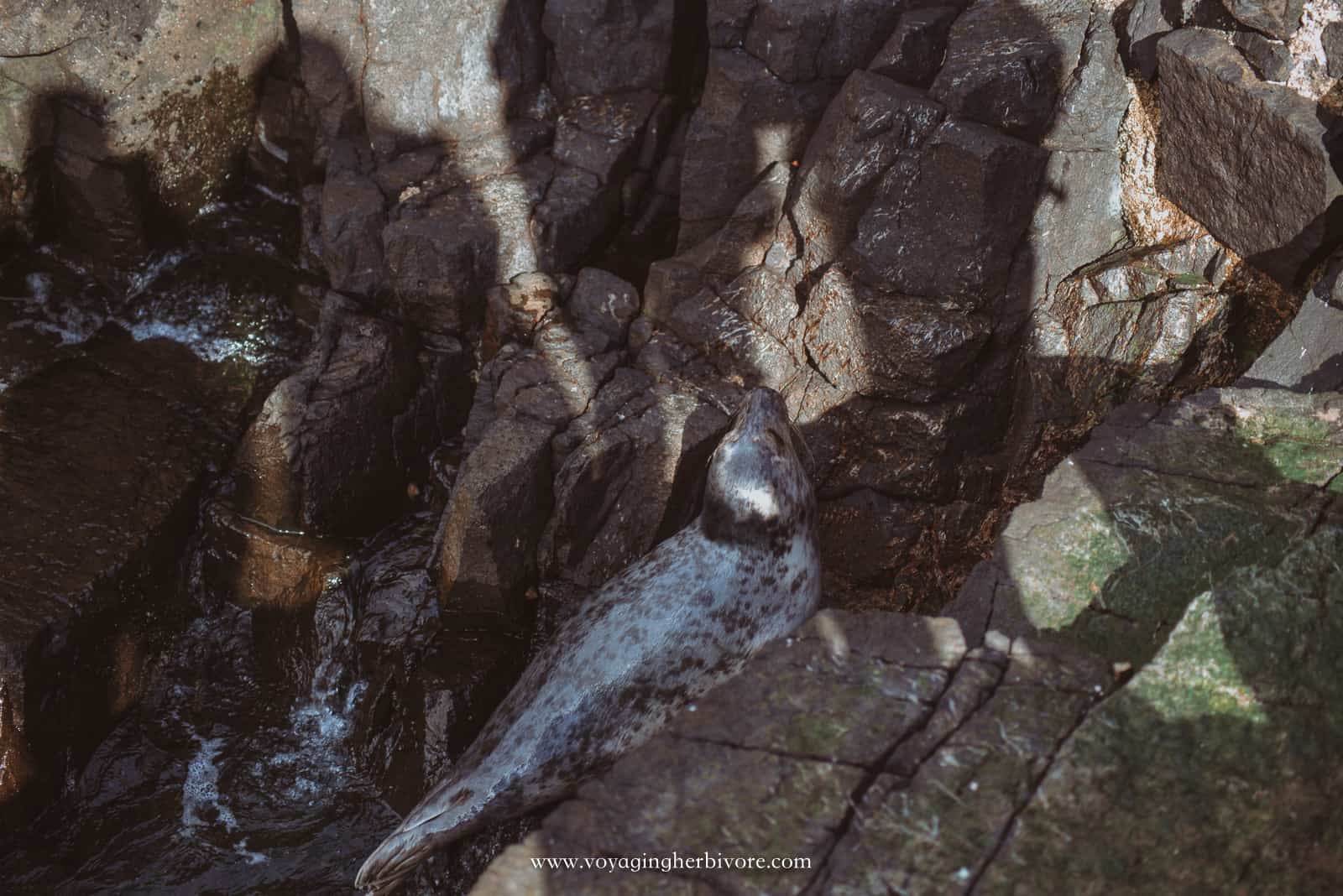
Seals
The Scottish island is home to more than just incredible birds. Both grey and common seals also enjoy the coasts of the Isle of May and spend their summers breeding here. They’re curious beasts and when we visited, one swam right up to the coastal rocks we were sitting on and climbed right up to investigate us!
Kittiwakes
Kittiwakes are also commonly found on the Isle of May with 6,500 pairs. They get their name from their call that sounds like their name – make sure to keep an ear out when you take a boat tour to the Isle of May. Kittiwakes spend the winters around Greenland (brr) before returning to the Isle of May where they’ll lay one to two eggs.
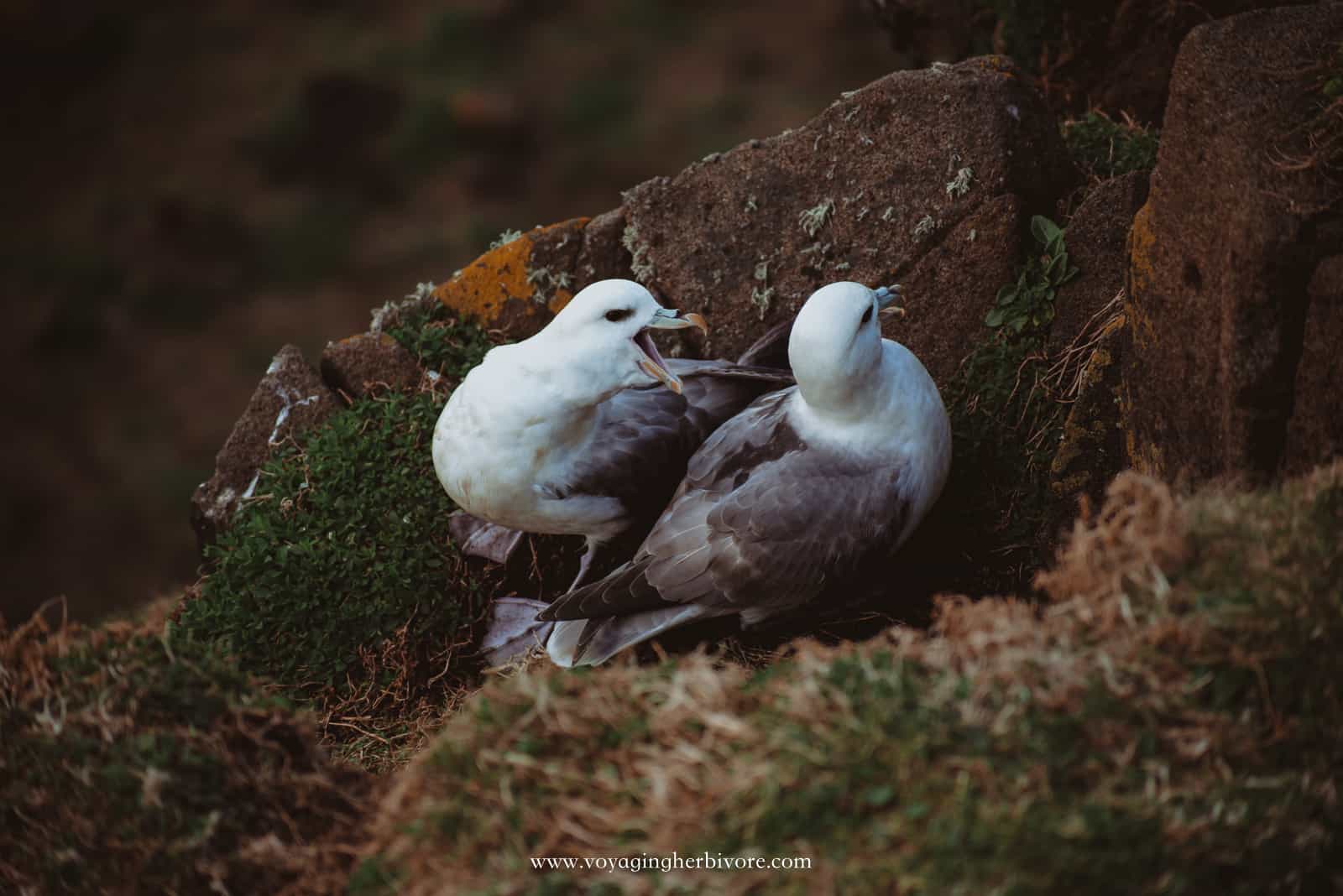
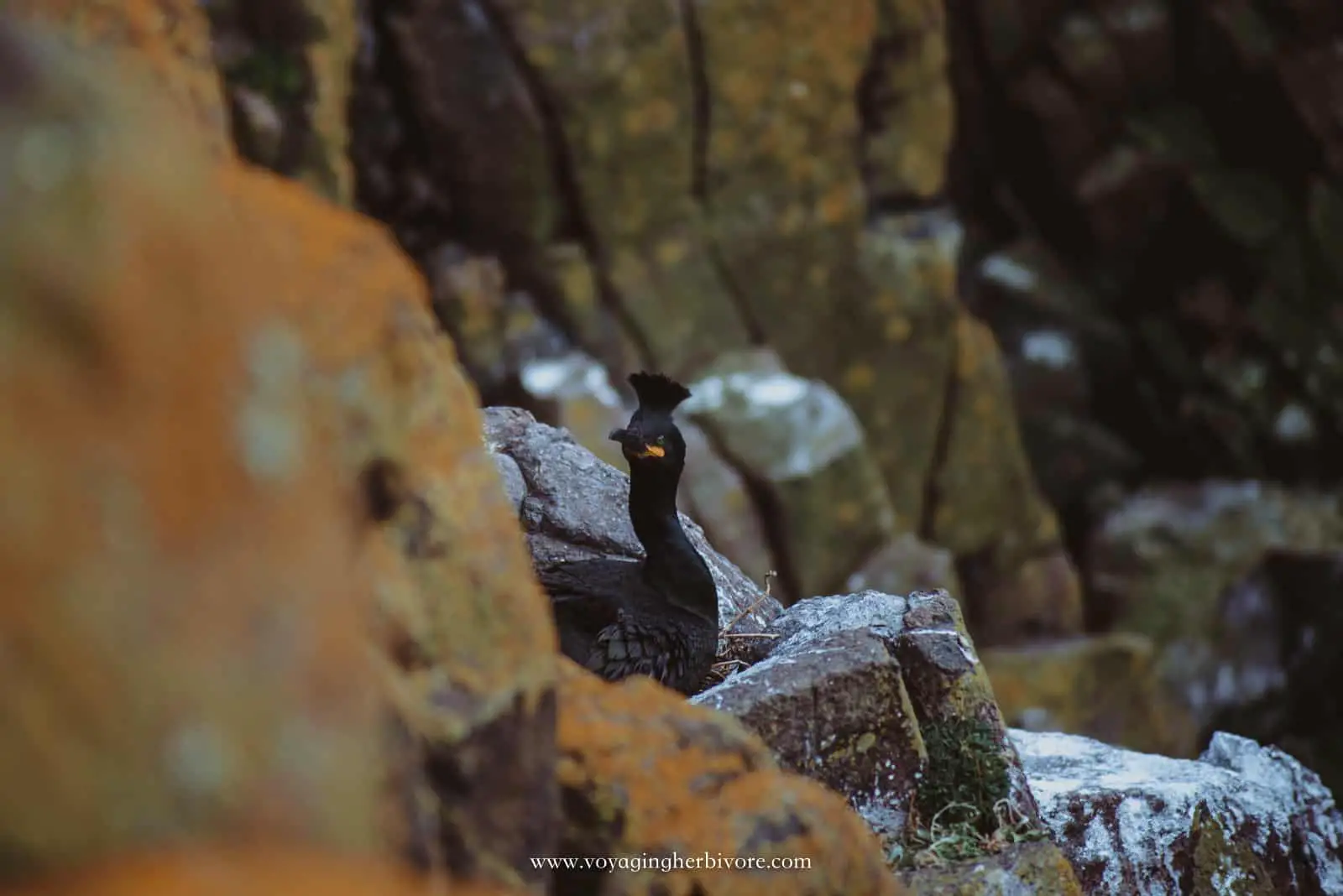
Shags
The Shag population suffered a population drop in 1992 and dropped from 1500 to today’s 500 pairs. These interesting birds build nests on the cliff edges, sometimes using interesting items like debris that washes up on the shores. They’re found mainly on the east and south sides of the island. Researcher Sarah Burthe has had some amusing encounters with Shags who seem like quite the characters!
Guillemots
There are over 17,000 pairs of Guillemots, making it the second most common bird on the Isle of May after the puffin. Guillemots don’t make nests, but instead from the age of five they may lay a single egg and incubate it on their feet, much like penguins. Both parents will incubate the egg and once it hatches, after about 20 days the young birds are encouraged to jump from the cliff ledges where their father is waiting to take them out to open sea and finish raising them.
Rabbits
The Isle of May is abundant with rabbits as they have no natural predators on the island. They do effect the puffins, but in a positive way by keeping the vegetation down and the puffin burrows accessible.
You’re bound to see a few of them hopping around as you explore.
Isle of May Map and Attractions
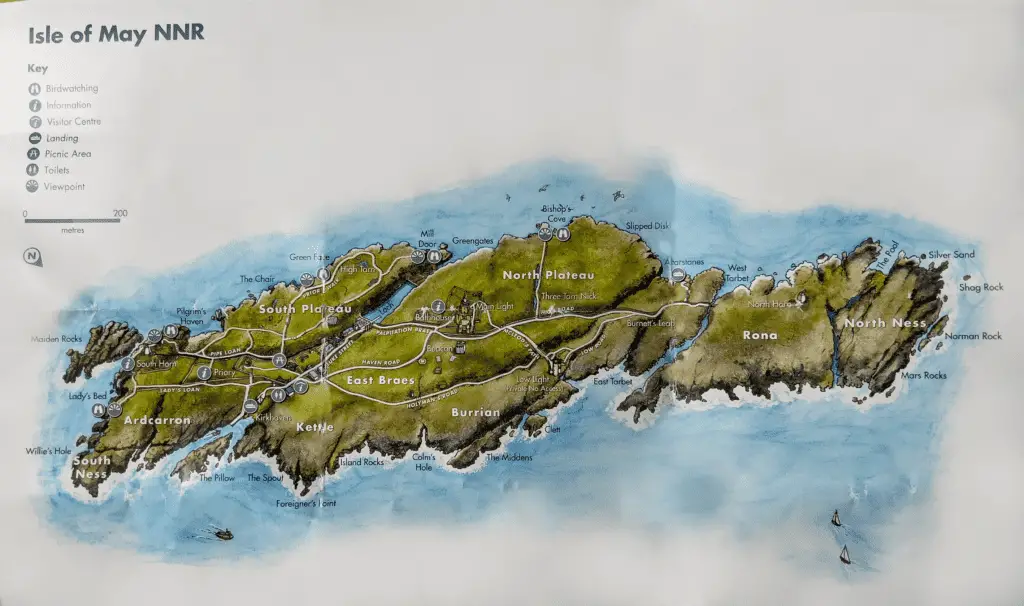
Attractions on the Isle of May include:
- Solar powered lighthouse
- Luke Street: where researchers live
- Rona and North Ness: Not accessible to the public
- Lady’s Bed: Frequented by photographers
- South Horn
- Bishop’s Cove: Great place to see seals
My Isle of May Boat Trip Experience
We had an absolutely fantastic time exploring the Isle of May. Unknowingly, it was only the second day that the island was open and it was the first day that puffins were back on the island cleaning out their nests. The ride to the island was quick and the boat went via Bass Rock before making its stop on the Isle of May.
Upon arrival, one of the island’s researchers met us and gave us an overview of the island. The map above comes from a pamphlet that’s available on site. There are bathrooms available but you won’t find any running water to refill your water bottle so make sure to top up before hopping on the boat!
Our guide was happy to walk us around the island and show us the sites and had loads of information about the wildlife and life on the island.
All in all, our Isle of May boat trip excursion was a fantastic day and we can’t wait to do it again, especially later in the summer when puffins have babies in their nests!

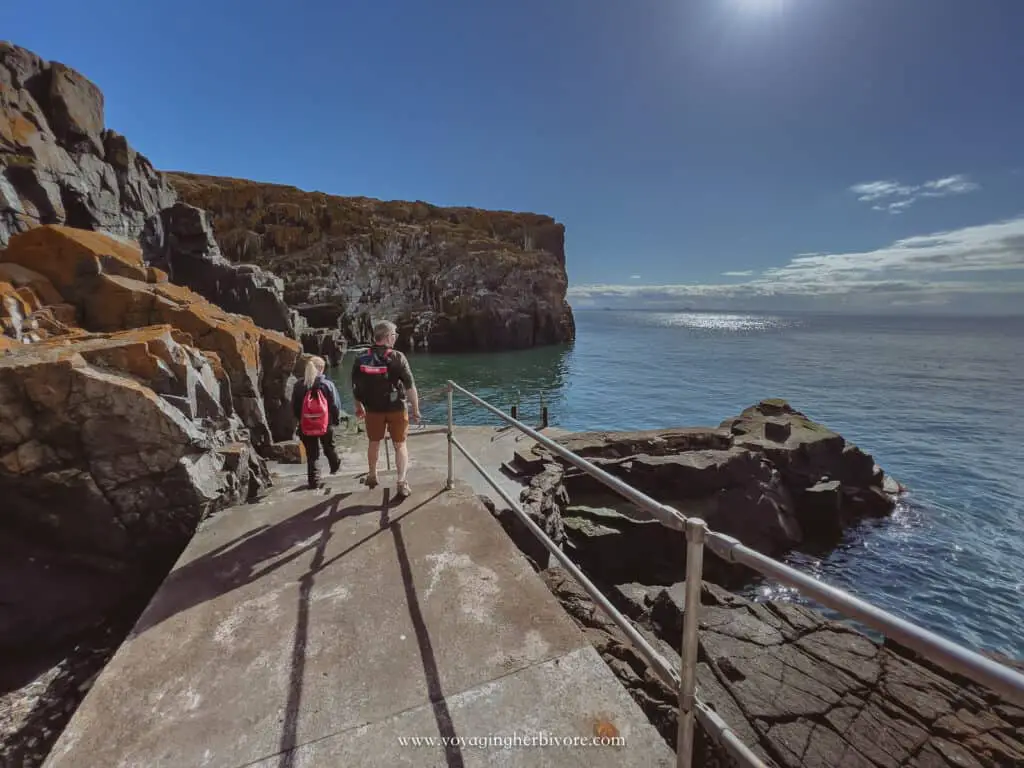
More Things to Do
Isle of May Scotland FAQ
Researchers live on the Isle of May from March to October, but outside of this time, the island is uninhabited.
The Isle of May is owned by NatureScot and is a national nature reserve.
Yes, you can visit the Isle of May on an official boat tour.
Yes, you can stay overnight on the Isle of May and help the researchers track birds. You need to apply here in order to stay on the island.
No, the Scottish island is all dirt paths that are quite bumpy and hilly.
Isle of May Trip Resources
- Stay in the Observatory on the Isle of May
- Boat tour from North Berwick to the Isle of May
- Boat tour from Anstruther to the Isle of May with Anstruther Pleasure Cruises (Isle of May Ferry)
- Boat tour from Anstruther to the Isle of May with Osprey Anstruther
- Wildlife Details
- Isle of May blog
- Scottish Seabird Centre Discovery Experience
What Camera Gear Do We Use?
- Camera body: Nikon d750
- Phone: iPhone 13 Pro
- Favorite Multipurpose Travel Lens: 24-120mm f/4
- GoPro: GoPro Hero 8
- Drone: DJI Mavic Air is no longer available so we recommend the DJI Air2S
- Camera Bag: Wandrd Prvke 31L
- Tripod: ESDDI Aluminum Tripod
If you want the full list of things we keep in our camera bag, check out the complete guide or browse our photography guides.
More Scotland Posts
- 10 Best Destinations for Romantic Couples Breaks in Scotland
- 6 Jaw-Dropping Scotland Gift Experiences
- 10 Dreamy Scotland Romantic Getaways for Couples
- 15 INSANE Fun Facts About Scotland You Need to Know
- Puffins in Scotland: Where, When & How to See Them
- 5 Highland Tours From Edinburgh to See the BEST of Scotland
- The BEST 5 Day Scotland Tours From Edinburgh
- 10 Unusual Edinburgh Gift Experiences They’ll LOVE
- Isle of May Boat Trip: Read This BEFORE Seeing the Puffins
- Top 10 Splurge-Worthy 5 Star Hotels in Edinburgh
- 10 PERFECT Gift From Scotland
- 12 Gorgeous Bookshops in Edinburgh You NEED to Visit
- 15 STUNNING Rooftop Bars in Edinburgh
- 10 FANTASTIC Edinburgh Walking Tours
- How to Photograph Scotland: From Highlands to Cities
- 10 Quirky Edinburgh Hostels You’ll LOVE Staying In
- 10 Day Scotland Road Trip Itinerary for an EPIC Adventure
- Rabbies Scotland Tour Review – Black Isle
- Where to Stay in Edinburgh, Scotland
- Vegan Edinburgh & Beyond: AMAZING Restaurants You NEED to Try
- Beautiful Scotland: Photo Spots You NEED to See
- Top 10 Things To Do in Edinburgh, Scotland
- Heart of Scotland Tour Review – 3 Day Edinburgh to Isle of Skye Bus Tour
Free Resources





And as always, you can find more sustainable travel content on Instagram @VoyagingHerbivore, Youtube, and TikTok and to get updates straight to your inbox, enter your email below.
If you found this guide helpful and want to help us keep these resources free,
please consider making your next Amazon, Expedia, Hostel World, Etsy, Trivago, and Booking.com purchase through our links (just click right on those words – you can do it right now and unless you clear your cookies before your next purchase, it will remember). It costs you no extra and gives us a small commission. Thank you!
Pin Isle of May Guide
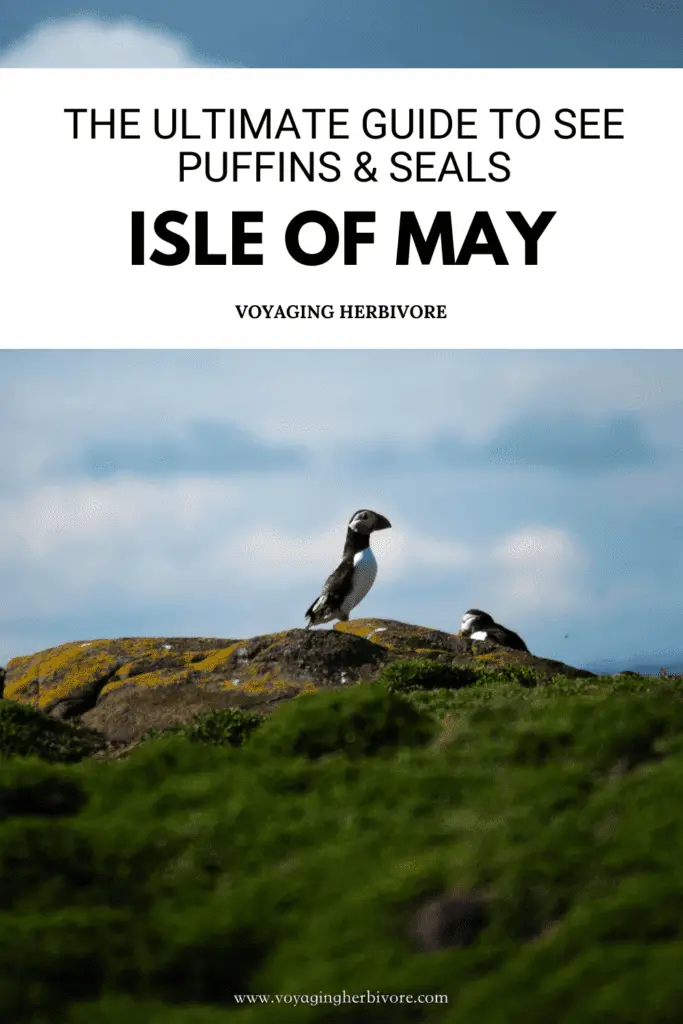




Leave a Reply